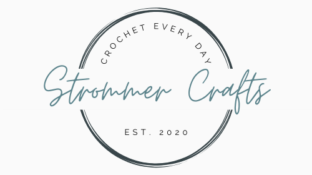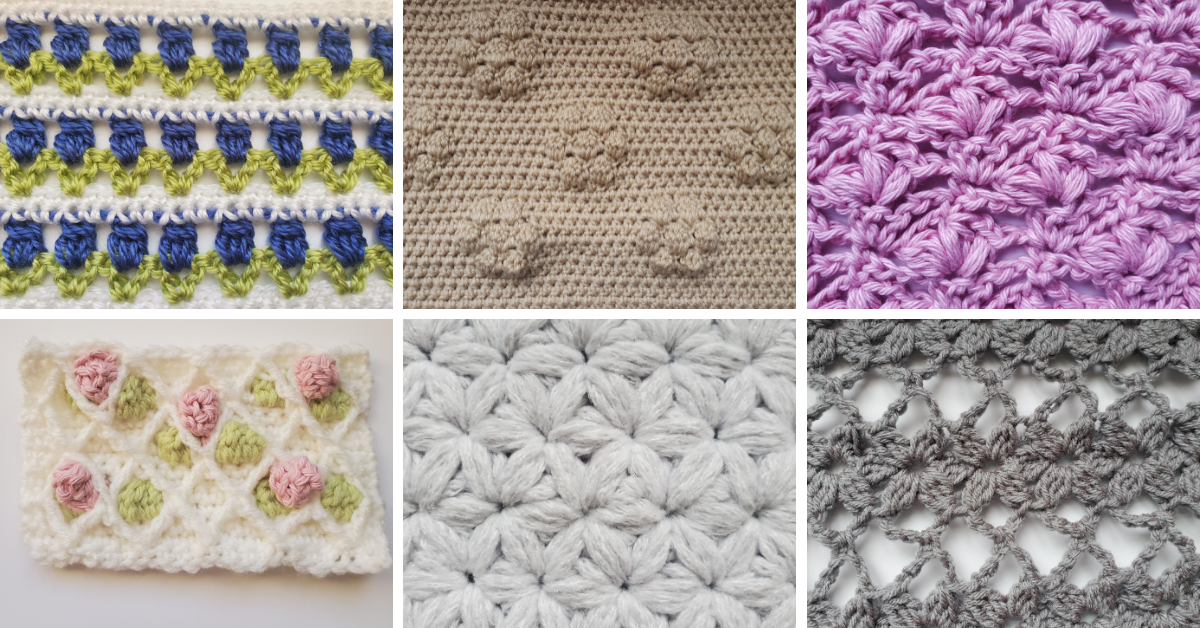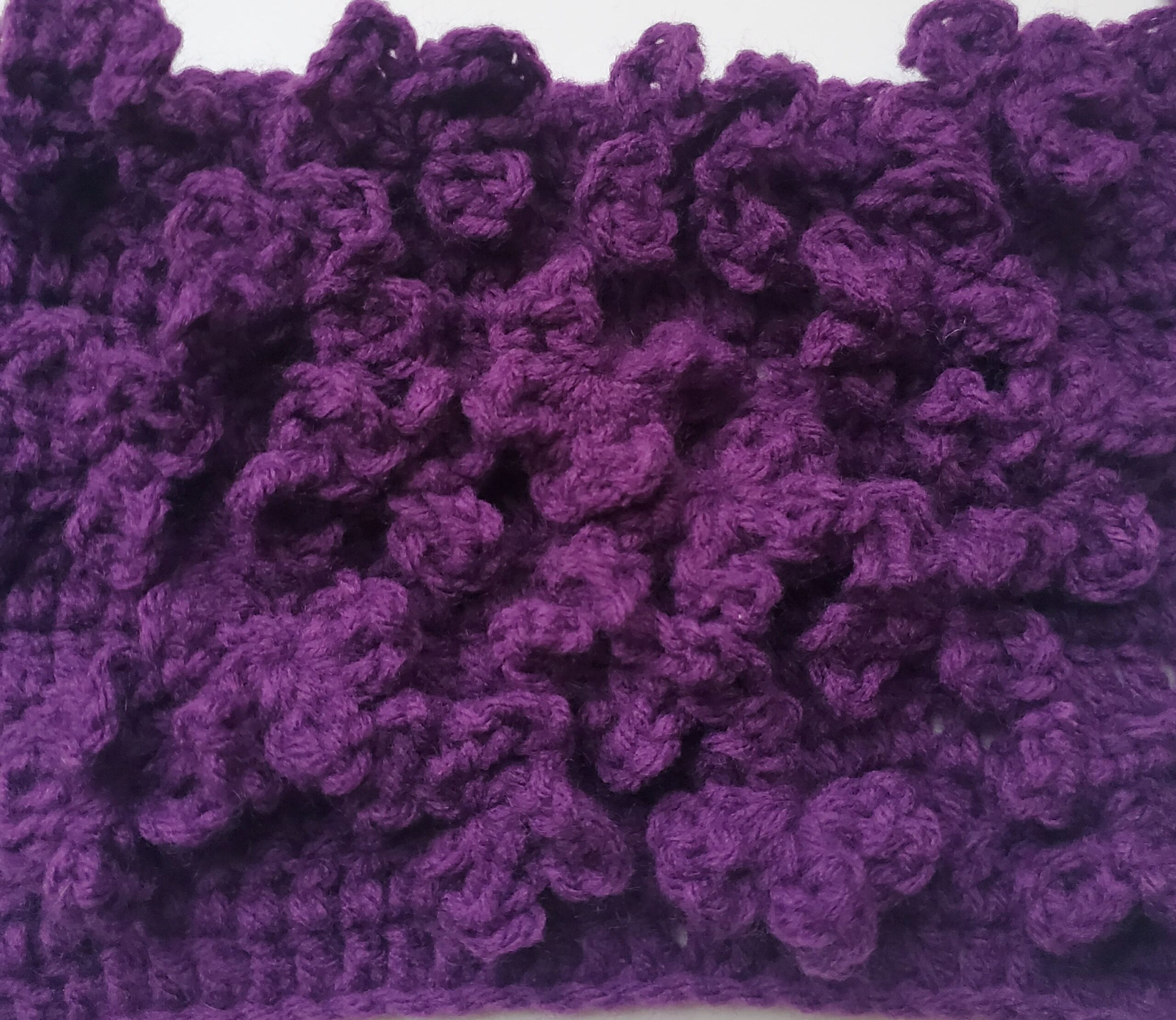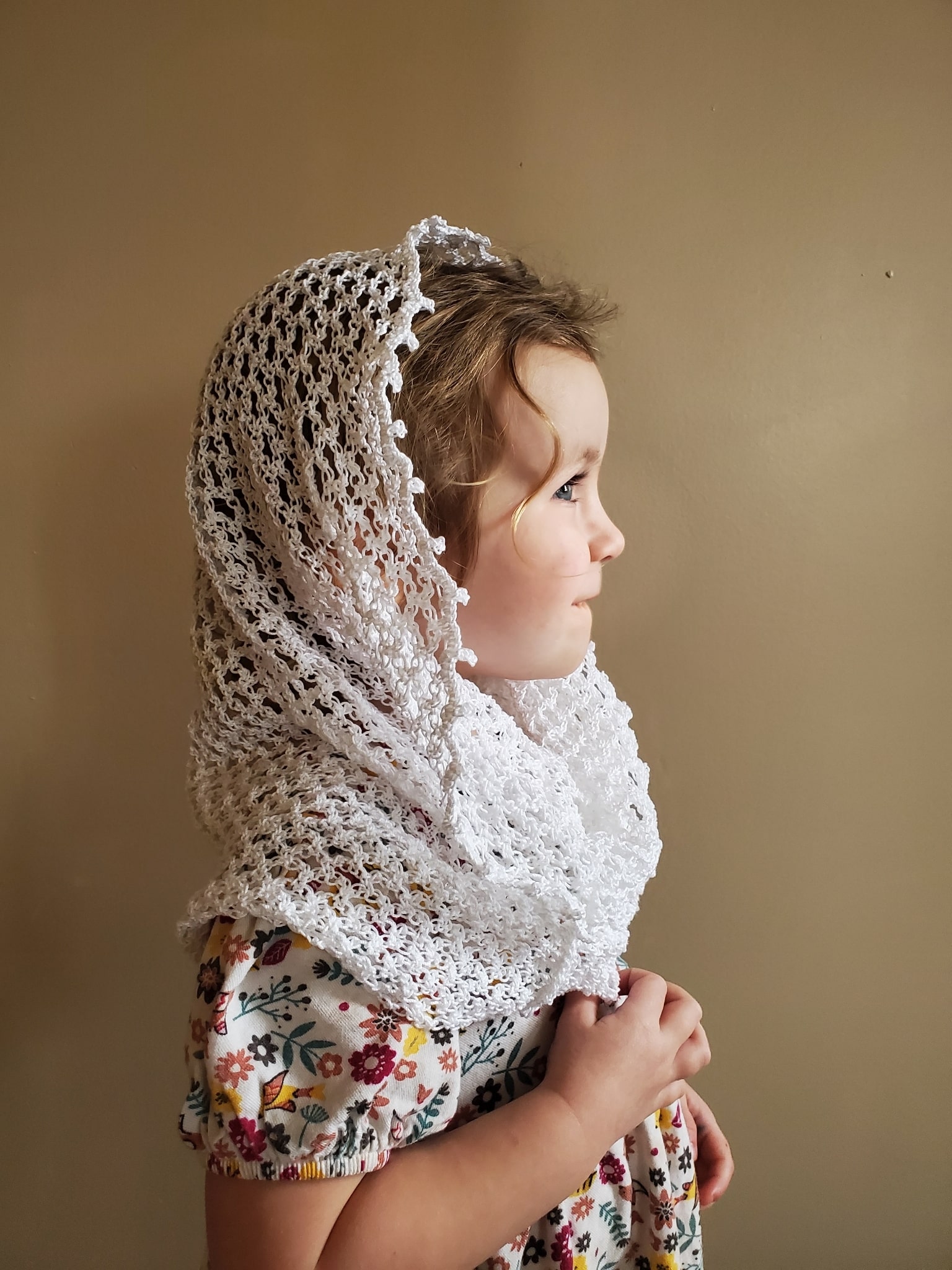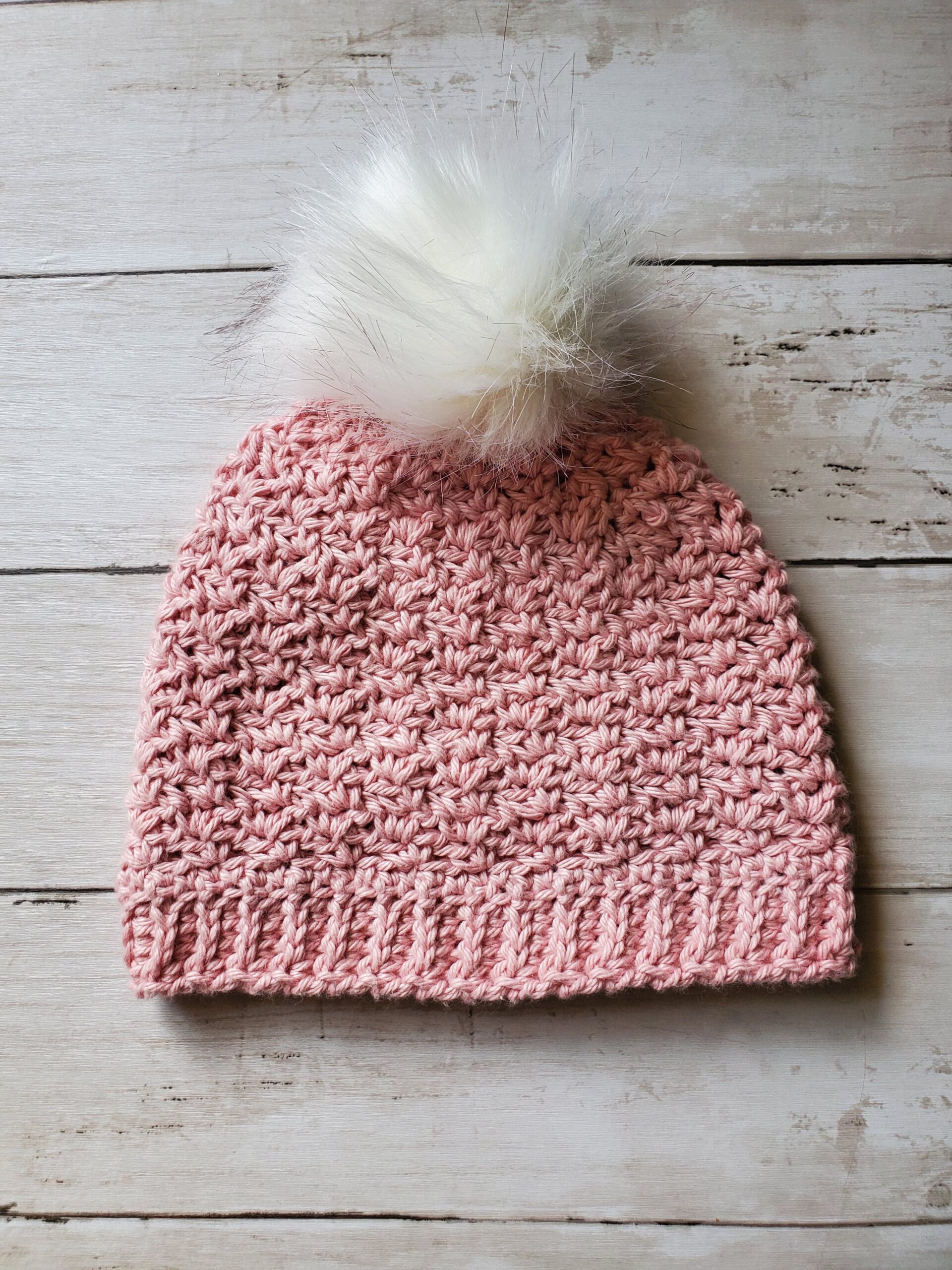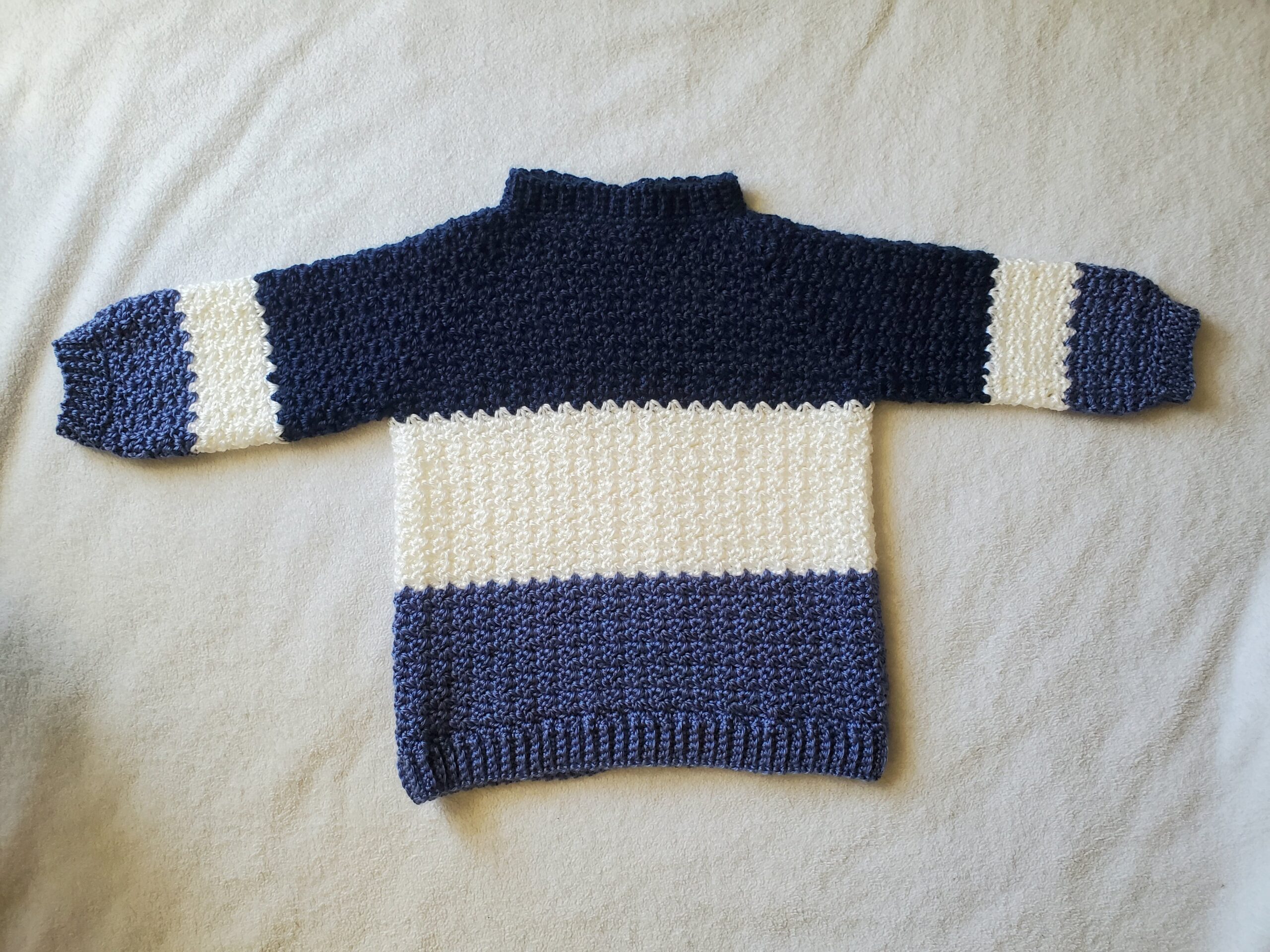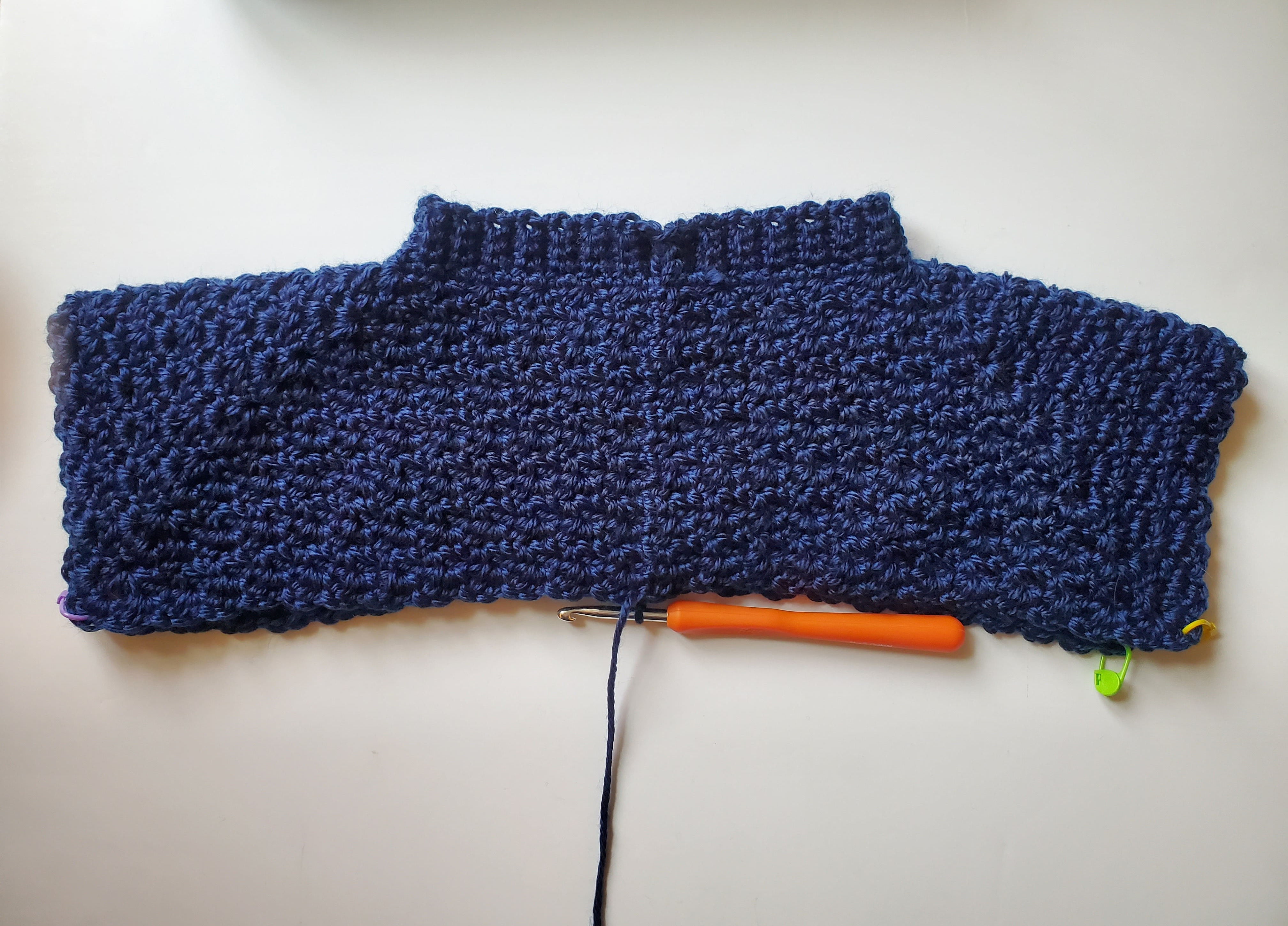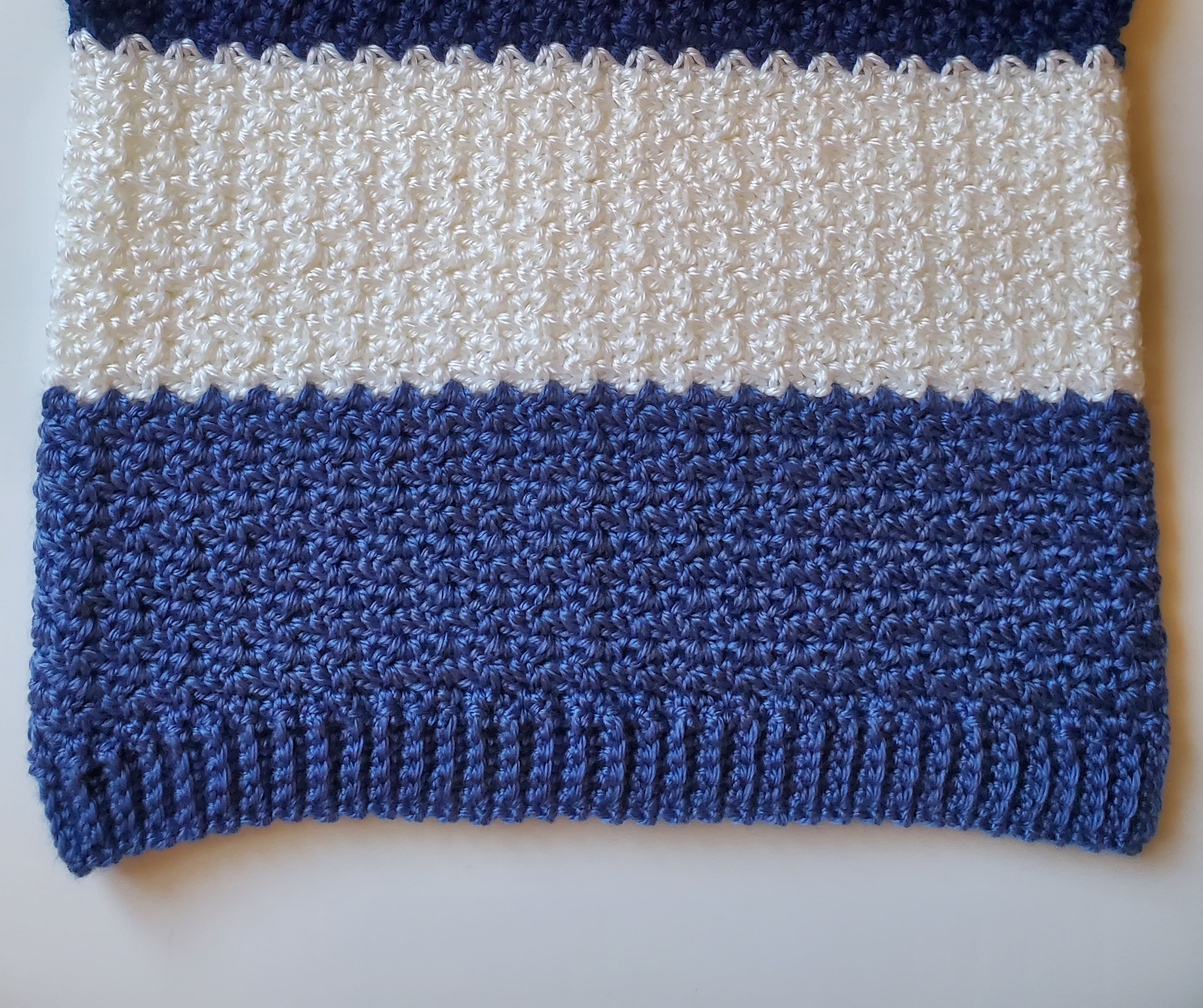17 Crochet Stitches that Look Like Flowers
Are you looking for crochet stitches that look like flowers to incorporate into your next project? Here are 17 different stitches/patterns that you can use to get some floral inspiration…for free!
Click the headings to take you to the tutorials.
1: The Jasmine Stitch
The Jasmine Stitch is a gorgeous stitch that creates the look of flower blossoms using a series of puff stitches. It’s one of the prettiest crochet stitches, but it can be a little difficult to master at first. The Jasmine Stitch is a thick stitch, which means that it uses up a lot of yarn quickly, so make sure you purchase enough yarn to complete your project. This is a great stitch to use for headbands, hats, or scarves.
2: Lace Flower Stitch
This is a delicate looking, lacy flower stitch that’s perfect for adding a decorative floral pattern to your crochet projects. Try using this stitch for a lacy shawl or scarf, or even a beautiful table runner. A series of three puff stitches separated by chains, creates the flowery look of this stitch.
3: Flower Stitch
This is a cute little crochet flower stitch that resembles a row of tulips or rose buds. The Flower Stitch tutorial has three color changes, so keep that in mind. Try using this stitch for blankets, scarves, or shawls. The “ground” is made up of 2 rows of single crochets, the “stems” are made of V stitches, and the flower is made up of a 3 double crochet puff stitch.
4: Crochet Flower Stitch
The Crochet Flower Stitch is a dainty, openwork stitch that creates a four petaled flower. This would be a great stitch for any lace work, like a doily or a table runner. The Crochet Flower stitch tutorial includes step-by-step pictures and is made up of 5 different rows to create the floral look.
5: Wattle Stitch
The Wattle Stitch adds a stunning texture to many crochet projects. The series of double crochets, chains, and single crochets, makes it look like tiny little flowers throughout your work. It’s beginner friendly and great for a variety of crochet projects. The Wattle Stitch is great for baby blankets, hats, scarves, or dishcloths.
Here are some patterns I’ve made using the wattle stitch:
6: Crochet Garden Flower Stitch
The Crochet Garden Flower Stitch is similar to the #4 Crochet Flower Stitch, however, this flower has 6 petals instead of 4, and is actually a little easier to work up. This is another lacy stitch that would be great for projects that need a floral border like a dress or a doily. The video tutorial in the link is in Spanish, so keep that in mind if you don’t speak the language, however there is a diagram that is available in the tutorial.
7: Lace Crochet Flowers
The Lace Crochet Flowers pattern creates a 5 petal flower using chains, double crochets, and single crochets. It’s a repeat of 8 rows, but it’s easy to get a hang of after some practice. The Lace Crochet Flower pattern uses the gaps made from the chains to create the petals in the flower. This particular pattern would be great for blankets, scarves, or borders.
8: Crochet Puff Flower Blanket
The Crochet Puff Flower stitch is a series of flowers made up of puff stitches. This is another tutorial that is in Spanish, so again, if you don’t speak or understand Spanish, turn on closed captioning and change the language setting to your preferred language.
These flowers are then connected to one another by crocheting into the top of the petals. This is different from most other types of flower stitches, as each flower is crocheted, connected and then cut with scissors. However, don’t let that discourage you, the way the flowers are connected keeps them secure and almost impossible to unravel. Not only is this great for a beautiful blanket, but a pillow would also be a good project for this stitch.
9: Flower Trellis Stitch
The Flower Trellis Stitch is an elegant crochet flower stitch that looks like flowers or roses peaking out behind a trellis. The bobble stitches and front post stitches create an interesting 3D effect in your work. You will also need 3 different colors of yarn to complete this pattern. The Flower Trellis Stitch would be great to use for blankets, crochet wraps, or any crochet garments.
10: Lace Flower Scarf
The Lace Flower Scarf stitch is another gorgeous crochet flower stitch that can be used for more than just scarves. It’s a lacy floral pattern that is crocheted in strips and then crocheted together. This is a great stitch to use for scarves, table runners, lacy curtains, summer tops or shawls.
11: Edging with Puff Stitch Flowers
The Edging with Puff Stitch Flowers is a cute way to add flowers to any crochet project that has a straight border. The flowers are made of puff stitches, somewhat similar to the Jasmine stitch, but chains and double crochets are incorporated in the pattern. This is a great stitch to add to a crochet baby blanket for a girl.
12: Vela Flower Square
The Vela Flower Square is a beautiful granny square made up of tiny, four petaled flowers. The way the flowers pop out of the square gives it an interesting texture. The Velma Flower Square pattern is easy to follow, and you only crochet with single crochets, double crochets, chains and slip stitches. This would be a good stitch to use for blankets, washcloths, or wraps.
13: Bobble Drops Flower Granny Square
The Bobble Drops Flower Granny Square is a pleasing, modern-looking crochet flower design. The pattern is created with 4 simple rows, so it works up quickly. The front post bobbles in the pattern creates this pretty flower square. This crochet stitch would be great for blankets, bags, cushions, or garments. Using thicker yarn or a bigger crochet hook may be helpful to cover more area quickly with this pattern.
14: Crochet Velvet Flowers Throw
The Crochet Velvet Flowers Throw is another cute way to incorporate flowers for a blanket or throw. Flowers are made throughout the blanket by crocheting bobbles in groups. The bobbles can be pushed out to make the flowers “pop.” This would be a great pattern for blankets, garments, or scarves.
15: Sunburst Granny Square
The Sunburst Granny Square is a wonderful way to get the look of sunflowers in your projects. There’s 4 color changes and a variety of different ways to arrange the colors to get the sunflower look you want. The sunflower is created by crocheting puff stitches and bobbles for the petals. The Sunburst Granny Square is great for blankets, bags, pillows, and garments.
16: African Flower Crochet Pattern
The African Flower Crochet Pattern is a floral, hexagonal “granny square.” This is another pattern with 4 different color changes. Figuring out which color changes look the best is part of the fun with these types of flower crochet patterns. The African Flower is created with mostly double crochets and chains. This is a great pattern for crochet blankets, pillows, and even animals made from motifs.
17: Simple Daisy Stitch
The Simple Daisy Stitch is a textured stitch that looks like little crochet daisy flowers or stars. The stitch is created with chains and pulling through loops. The Simple Daisy Stitch is great to incorporate into a variety of projects including scarves, blankets, bags, washcloths, or wraps.
I hope these 17 crochet stitches that look like flowers have inspired you!
Until next time.
